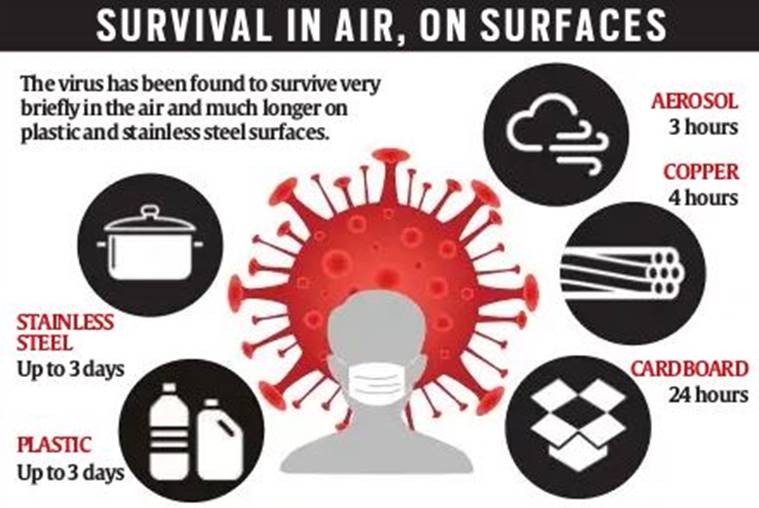Should We Prepare For A More Evolving Corona Virus?
With lockdown opening up, there are reasons to prepare to face an evolving virus that might have become airborne
The new scare gripping people’s lives is a possibility that the Covid-19 virus can actually stay airborne and survive different climatic conditions too. In a lab in Bristol, scientists are now going through tests to ascertain this for sure. There are indications that the virus can survive in the aerosol particles that we breathe from around us.
Last week started the launch of tiny
droplets of live Sars-CoV-2 in the Bristol lab. These were then levitated between
two electric rings to test how long the airborne virus remains infectious under
different environmental conditions. There are now questions being raised over
how long can the virus remain alive in conditions where air conditioning is
leading to air recycling where these particles might already be suspended in
the air.
There is now a growing belief that
besides getting transmitted through human contact, the infected particles are
working through what they call is aerosols. This is coming to become a growing
consensus amongst experts who now feel the infected droplets have the capacity
to be carried over greater distances in air currents and accumulate in poorly
ventilated spaces. This suspicion is largely based on outbreaks in restaurants
and choirs, where people have contracted the virus despite being some distance
from the infected person.
University of Bristol has now designed a
specific apparatus that can detect the life of the virus in various climatic
conditions. This will help ascertain as to how long can the virus survive (if
at all) in various countries and the precautions then need to be taken to
function in closed ventilated places like restaurants, café, pubs, theatres
etc.
Allen Haddrell, the University of Bristol chemist is the one who has designed and built the apparatus, called Celebs (controlled electromagnetic levitation and extraction of bioaerosol on to a substrate) using 3D printers. Haddrell spoke to the British media and said, “We can effectively mimic a cold, wet British winter – or even a hot, dry summer in Saudi Arabia – to look at how these dramatic differences in environmental conditions affect how long the virus remains infectious while suspended in air.”
The nature of the virus is gradually
being discovered; but there are aspects that are unknown to the scientists,
while the world is working overtime to come up with an effective vaccine. For
what has been determined is that the suspended particles of the virus remain
for hours or more, depending on factors such as heat and humidity. If virus particles,
probably on droplets of mucus or saliva, can be suspended in air for
more than a few seconds, as the measles virus can, then anyone passing
through that pathogenic cloud could become infected.
But will they remain alive for more time,
and can be circulate in recycled air, is a mystery that might be solved sooner,
to the scare of the world. Right now, UK and Europe is facing a massive second
wave of the infection. Many have blamed lack of social distancing protocols not
been taken seriously. Australia for example has been stricter, implementing fines
of those not wearing masks or refusing to remain quarantined if need be.
Countries will have no choice but to do so, if airborne virus becomes another
stage that the virus has taken to evolve for its own survival amongst the human
race.


Comments
Post a Comment